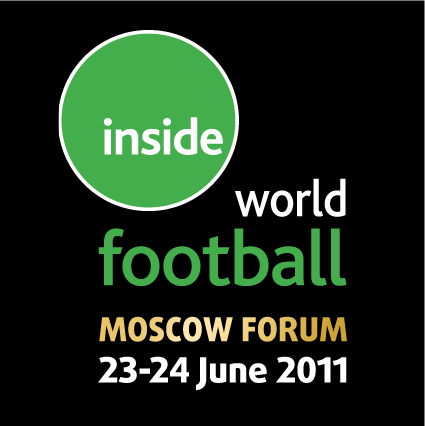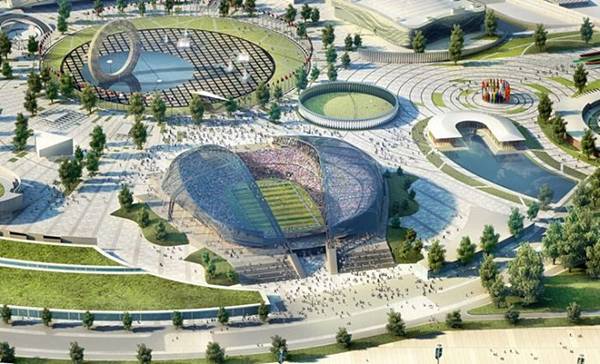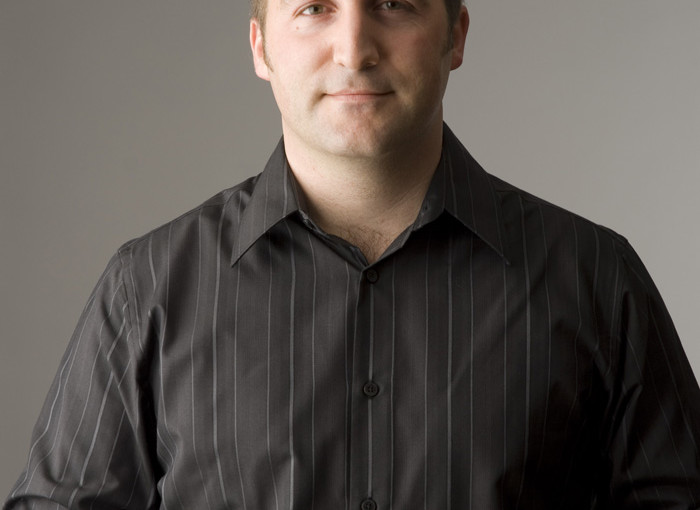By David Gold
 June 5 – Tom Jones, the Associate Principal of Populous, the global design specialists whose Senior Principal John Barrow will be speaking at the Inside World Football Moscow Forum in June, says that Russia should think about the wider infrastructure required for the 2018 World Cup, and learn some lessons from the experience of South Africa in preparing to host a successful World Cup.
June 5 – Tom Jones, the Associate Principal of Populous, the global design specialists whose Senior Principal John Barrow will be speaking at the Inside World Football Moscow Forum in June, says that Russia should think about the wider infrastructure required for the 2018 World Cup, and learn some lessons from the experience of South Africa in preparing to host a successful World Cup.
“It is incredible how many stadia were built in South Africa but the key is to ensure that they are designed with long-term planning and use in mind,” explained Jones, whose organisation worked on the design of the Soccer City stadium in Johannesburg for the 2010 World Cup.
“These major sports events act as a focal point for a country to come together and what was very successful in South Africa was the pride the country took in hosting that event, and part of what Russia wants to achieve in 2018 is the same benefit in developing its image, both for Russian people but also those who are visiting for the World Cup.
“At Soccer City, the design of that stadium is very evocative of Africa and with the work we’re doing in Russia we want to capture the feel of the country.
“It is also very important that Russia gives the consideration of getting people to and from the stadia as well as the stadia itself, and to understand the opportunities for development after the event.”
Russia is looking to build up to 13 new grounds for 2018, and Jones said that this can be a huge boost to the country.
“We’re finding that the construction of large stadia act as a catalyst for large scale, urban regeneration, which is something that we are experiencing in our work on the design of the London 2012 Olympic Stadium.”

Jones also reflected on the importance of flexibility and ensuring that the stadia constructed reflect the cultural context in which they are built.
“Our design for the Sochi 2014 Olympic Stadium was developed to allow it to host the opening ceremony for the Sochi Winter Games, but also with enough flexibility that it could be expanded after the Games to act as a host venue for the Russia 2018 World
“Our design of the main stadium in Kazan for the 2013 Universiade has also been developed to allow it to expand after the Games for use in the World Cup.
Jones was also keen to stress the importance of working with both commercial partners and operators from the start, and not to only start thinking about marketing once a stadium has been built.
“Architects are sometimes seen as only being interested in iconic designs, whereas we believe that a successful stadium also needs to maximise the opportunities for revenue generation and be easy to operate.
“We believe that our work in projects like Wembley Stadium show how all of these factors can be brought together and that’s what we hope we bring to the Russian market.
“However, we’re not saying the Wembley model is the one we’ll impose in Russia, because there are social and cultural aspects that will always need to be appreciated, in order to deliver designs that are appropriate to their location.”
For more details on the Inside World Football Moscow Forum, please click here.
Contact the writer of this story at zib.l1751418603labto1751418603ofdlr1751418603owedi1751418603sni@d1751418603log.d1751418603ivad1751418603
Related stories
June 2011: Galal urges Russia 2018 to get public-private investment balance right
May 2011: Coward confirmed as latest speaker at Inside World Football Moscow Forum
May 2011: Russian Premier League Executive Director confirmed as speaker for Inside World Football Moscow Forum
May 2011: Sorokin confirmed as speaker for Inside World Football Moscow Forum
March 2011: Announcing the Inside World Football Moscow Forum

